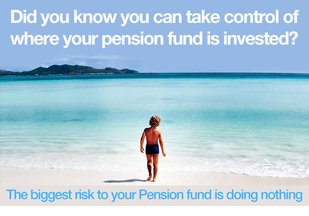|
A lot of investors simply rely on the price given to them by the agent or developer. But developers can overcharge, they over-design buildings in a bid to win awards and they are forced to overcharge for the buildings simply to break even.
Some savvier investors may base their investments on a search on one of the many internet property portals to find the average prices for similar properties in the area. The more experienced might also use sites like Zoopla to see how properties have been amended, re-listed, re-valued since their original posting. However, these sites only give us the values that the vendors and the estate agents think that the property is worth. This isn’t reliable as the vendor clearly wants to obtain the maximum price, a strategy supported by the agent who normally works on a commission basis. There is only one way for investors to ascertain a property’s value which is truly safe and that is to find a properties residual value. The residual value is based on the amount of net rental income it can generate – anything above 6% looks like a good investment. For example, if a property brings in £6,000 rent per year after all costs have been taken in to account, that £6,000, based on a 6% net yield would give the property a value of £100,000. That £100,000 would be the Residual Value of the property and it should be the focus for every investor going in to a deal. But at the minute investors ignore the residual and rely purely on the capital growth of a property which is hopelessly optimistic considering the market place at the moment. Despite the residual value of a property being £100,000. The investor may pay £125,000 believing that the value of the property will increase and they can sell it for £150,000. But then if property prices start to fall slightly, he’s suddenly in negative equity and then the only price someone would be willing to pay for the property is the Residual Value and the investor will have lost £25,000. The key to real successful and safe investment is how you derive the 6% net yield which you have used to establish the property’s residual value. By working out the 6% net yield using below market value rent it means that the investor will not have to contend with tenants struggling to pay rent. As rent continues to rise, there will always be a demand for properties charging below market value rent. First time buyers will be queuing round the block to save a £100 per month, yet the investor is still left with a 6% net yield because they have bought the property at residual value. It also means that there will always be savvy investors looking to purchase a property at the residual value because they are not only purchasing a strong income stream, but they are purchasing a property at a price that will not be affected by market fluctuations or crashes. If the property market was to fall again then the investors who have invested in residual value will be protected from the fall in house prices and when houses start to get repossessed and more people are forced in to the rental market, then their yields will go up even though they are still charging below market rent. In the end, everybody will be relying on residual property valuations. It’s inevitably in the future but there’s no reason why investors can’t take advantage of them now. Invest in Student accommodation with unit prices on average 30% below comparable units and a net rental guarantee of 8% for 2 years - LINK A substantial fall in the number of people going bankrupt could be due to high fees not any improvement in personal finances, a leading debt advice body has warned.
Joanna Elson, the chief executive of the Money Advice Trust, said that a 10 per cent fall in the numbers of people going insolvent "may largely be driven by increases in the fees required to make yourself bankrupt". She added: "People struggling with debt often can't afford the £700 it costs to go bankrupt [£525 for the deposit plus £175 for the court fee], even though it would otherwise be their best option. "This leaves them in a financial black hole. The numbers using debt relief orders, one of the cheaper remedies, has risen." On Friday, it was revealed there were 27,390 personal insolvencies in England and Wales in the second quarter of this year, a 10 per cent decrease on the same period a year ago and the lowest figure since the summer of 2008. The figures are a surprise as the UK has recently entered recession, but Ms Elson warned insolvencies may spike again later this year: "These figures are likely to get worse, with incomes increasingly unable to match rising prices." Families' budgets are squeezed by increased utility costs, soaring food prices and salary freezes.
Five million households currently face increases in their fuel bills of up to £100-a-year as SSE, the UK’s second biggest energy company after British Gas, said that from mid-October the price of an average annual dual fuel bill will rise from £1,172 to £1,274. Other companies are expected to follow suit. As well as energy bills rising, mortgage payments are set to increase as other lenders follow Santander’s suit in upping its Standard Variable Rate (SVR). Many individual salaries are being frozen and one in ten employees is being forced to take a pay cut. With the combination of increased utility costs, soaring food prices and a compounding squeeze on salaries, Moneysupermarket.com has found that 80pc of households are on a financial budget irrespective of income, demographic or family set up. In order to ease the financial burden many Brits making extensive cut backs where they can. Almost half of us have had to use credit in order to pay utility bills, while a 25pc of adults have said that they are forced to rely more on credit cards to ensure that the regular household outgoings are covered. Clare Francis financial expert at Moneysupermarket.com comments: "The fact a rise in outgoings of £50 or less would tip a third of Brits to ‘financial breaking point’ speaks volumes about how difficult people are finding things at the moment." Article published in the Telegraph follow the link to read the article - http://bit.ly/OXKL1M There are many reasons why you may have been the victim of payment protection insurance (PPI) mis-selling. If you have been mis-sold PPI you could be entitled to claim compensation. To help you find out if you are a victim I have produced a quick checklist so you can see if you may have a claim.
First, you need to check if you had PPI on any credit cards or personal loans during the past six years, even if you have since paid them off. If you did have PPI then run through the checklist below your bank or lender had a responsibility to ensure the PPI was suitable for you at the time it was sold to you. · Did your bank or lender tell you that you must have the PPI as part of the deal to get the credit card or loan? If so, that’s wrong. Having PPI is entirely optional. · Was the PPI added to your credit card or personal loan without your knowledge? For most people it is not immediately apparent they are paying for PPI because its cost is merged into the loan repayments. The terms and cost of the insurance should have been explained and checked for suitability. · Were you unemployed, self-employed, redundant, a student or retired? If so and you were sold employment cover as part of the PPI policy then it’s often worthless. You should have been made aware of this. · Did you have any pre-existing medical conditions? Your bank or lender should have checked this as any pre-existing medical conditions are likely to be excluded from the PPI cover. You should have been made aware of this. · Did you already have existing cover through benefits available from your employer? If so, your bank or lender should have checked this. If one or more of these points apply to your circumstances at the time the PPI policy was sold to you, then it’s likely you are the victim of mis-selling. Millions will see pensions slashed by up to 20% as new EU rules are set to send annuities plummeting22/6/2012
MORE bad news on pension's!! TIME TO ACT!
Millions of people could see the value of their pensions slashed by up to 20 per cent because of new EU rules. Those with a £100,000 pension fund could be more than £1,100 per year worse off in retirement because of the reforms, research has shown. The Solvency II rules, which are due to come into effect in January 2014, will force pension funds to hold a higher proportion of 'safe' Government bonds. As the bonds - called gilts - have such low rates of return it will drive down the returns on retirement fund annuities, which are used to pension income. The reforms are designed to make pension funds safer and reduce the risk of them going bust. Annuities, which set retirement income for life, have already fallen to historic lows because of the impact of quantitative easing. At present, a pension annuity fund may invest 20 per cent in low-yield gilts and the rest in riskier corporate bonds which have a higher rate of return. But under the new EU rules, annuity funds will be forced to hold a higher percentage of gilts. New research by Deloitte suggests annuity rates will plunge by between five and 20 per cent when the directive comes into force in January 2014. A £100,000 pension pot currently gives an income of £5,837, but once the regulations come into effect they will be between £292 and £1,167 a year worse off. Take control of your pension by investing in Alternative Investments via a SIPP. LINK TO SIPP INFORMATION PAGE AND VIDEO - SIPP's LINK Read more: ARTICLE LINK St Lucia is often called “The Helen of the West Indies” for its captivating beauty. With a total land area of about 620 square miles, St Lucia is one of the most beautiful islands in the world.
The island has excellent beaches, scenic waterfalls, mountains, rainforests, orchids and exotic plants. The twin mountain peaks of Les Piton drop dramatically to the water´s edge on the west coast. In the south, visitors get close to bubbling pools of lava and steaming sulfurous spouts at Sulphur Springs Volcano, or splash in the sulfur-infused waters of the Diamond Waterfall and Mineral Baths. St. Lucia is increasingly seen as one of the world’s most interesting property markets. The island is in many ways comparable to neighboring Barbados, but St. Lucia’s property prices are about 40% to 60% lower. Reasons for the rising buzz about St Lucia: The island is one of the most accessible in the region, with direct flights from the US, Canada, Germany, and the UK. British Airways recently increased direct flights from Gatwick to St. Lucia. One of the region’s lowest crime rates. A tax haven with no VAT, no capital gains tax, no inheritance tax and no estate tax. Top destination for weddings and honeymoons St Lucia’s first casino recently opened, plus a multi-million pound shopping mall, multi-screen cinema, and new restaurants and bars. St. Lucia has a new niche—health and wellness. With the support of the government and other private institutions, the first St Lucia Health and Wellness Retreat is set to open mid-November 2011 with the new Alaia spa designed and operated by ESPA opening on the Marquis Estate 2 years later. St Lucia’s currency is pegged to the US dollar at EC$2.7 to US$1. House prices Property values rose by about 10% to 15% annually from early-2000s to 2008, local analysts estimate. The northern coast, with most residential developments, saw the highest house price rises. According to the Global Property Guide research prices now in St Lucia range from US$1,207 to US$2,649 per square metre (sq. m) for houses from 150 sq. m to 700 sq. m. Typical prices in March 2011: 150 sq. m. house: US$181,050 250 sq. m. house: US$390,750 350 sq. m. house: US$927,150 700 sq. m. house: US$1.32 million 130 sq. m. condo unit: US$389,220 The average condominium price was US$2,994 per sq. m. Most new developments are in the island’s north, including Castries, the capital city, and Rodney Bay. South Coast development is limited by strict planning laws, and by the area’s dense rainforest. St. Lucia’s economy expanded by a healthy 4.4% in 2010 after a 1.3% decline in 2009 and 5.8% growth in 2008, mainly due to an increased activity in construction and tourism, supported by a buoyant property market. Inflation was 3.3% in 2010, up from -0.2% in 2009. From 2003 to 2007, St Lucia had average inflation of 2.6% per year. According to the latest IMF report, “In the face of increasing headwinds from subdued growth in the U.S. and Europe and an uncertain global financial environment, we expect growth at about 2% in 2011, shored up by post-hurricane reconstruction. High world commodity prices are expected to put temporary pressures on inflation and the balance of payments in 2011, but these will subside over the medium-term”. Follow the link for information on the latest 5* resort in St Lucia, prices starting from only £165,000 – LINK |
AuthorInvestment Property Worldwide will try bring to you a diverse range of property, investment news. Archives
October 2014
Categories
All
|
| Investment Property Worldwide.com |
|






 RSS Feed
RSS Feed
